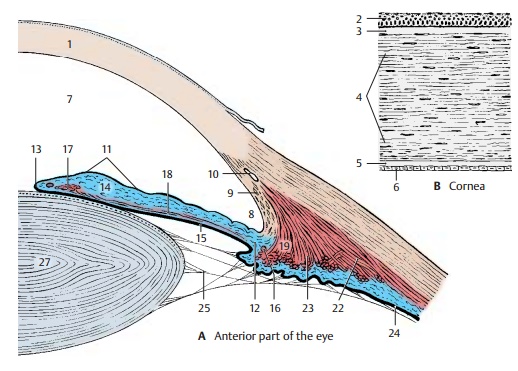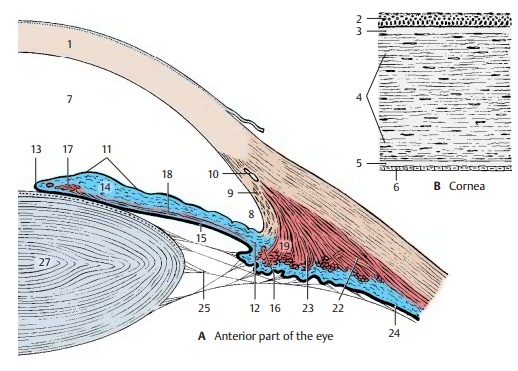Chapter: Human Nervous System and Sensory Organs : The Eye
Cornea - Structure of the Eye

Cornea
The cornea (A1, B) is positioned like a watch-glass on the eyeball. Because of its marked curvature, it has the effect of a focusing lens. Its anterior surface is formed by a multi-layered, nonkeratinizing squamous epi-thelium (B2) that rests upon a thick base-ment membrane, called the anterior limitinglamina (Bowman’s membrane) (B3). Belowthis lies the stroma of the cornea (substantiapropria) (B4); its straight collagen fibers form lamellae that lie parallel to the surface of the cornea. At the posterior surface lies another basement membrane, the posteriorlimiting lamina (Descemet’s membrane)(B5) and a single-layered endothelium (B6). The cornea contains unmyelinated nerve fibers but no blood vessels. Its transparency is due to a specific fluid content and the state of swelling of its components. Any change in the turgor causes turbidity of the cornea.

Related Topics